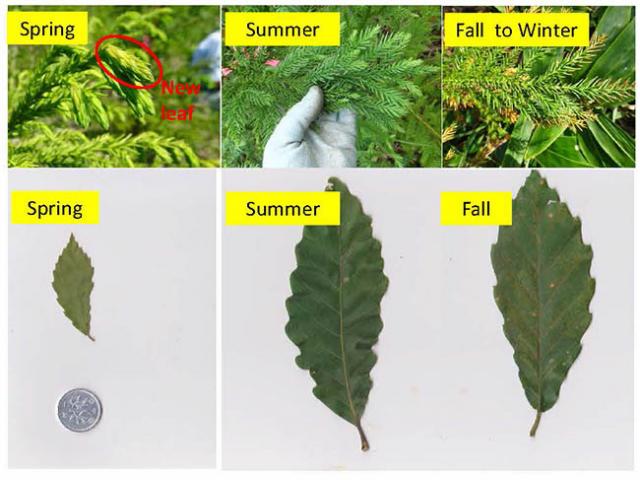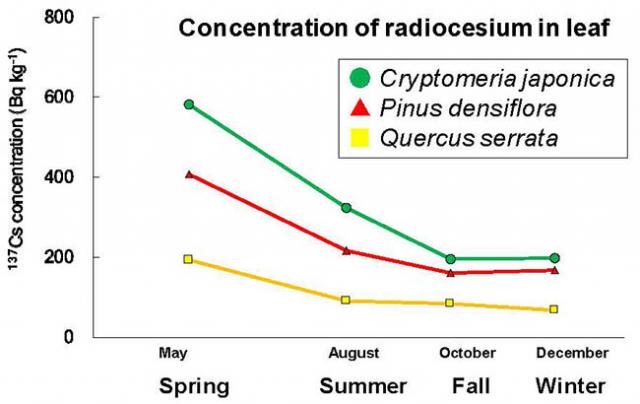Home > Research > Research Results > Research Results 2020 > Concentrations of radiocesium in branches and leaves show seasonal changes
Update:November 16, 2020
Main content starts here.
Concentrations of radiocesium in branches and leaves show seasonal changes
| Article title |
Seasonal changes in radiocesium and potassium concentrations in current-year shoots of saplings of three tree species in Fukushima, Japan |
|---|---|
| Author (affiliation) |
Kenzo Tanaka (a), Satoshi Saito (b), Satoru Miura (c), Takuya Kajimoto (d), Natsuko I. Kobayashi (e), Keitaro Tanoi (e) (a) Department of Plant Ecology, FFPRI, Tsukuba, Ibaraki, Japan. (b) Kansai Research Center, FFPRI, Kyoto, Japan. (c) Center for Forest Restoration and Radioecology, FFPRI, Tsukuba, Ibaraki, Japan. (d) Tohoku Research Center, FFPRI, Morioka, Japan. (e) The University of Tokyo, Bunkyo-ku, Tokyo, Japan. |
| Publication Journal |
Journal of Environmental Radioactivity, 223–224: 106409 DOI:10.1016/j.jenvrad.2020.106409( External link ) |
| Content introduction |
As a result of the accident at the Fukushima Dai-ichi nuclear power plant, forests over an extensive area were contaminated with radiocesium. To undertake forestry and forest management, it is important to reveal the movement of radiocesium in forest, not only in trees that were directly contaminated at the time of the accident, but also in saplings that regenerated after the accident. Although these saplings absorb radiocesium from the soil, almost nothing is known of the seasonal changes in radiocesium concentrations in the trees. Therefore, over a two-year period, we examined seasonal changes in radiocesium concentrations in three tree species: Pinus densiflora (Japanese red pine), Cryptomeria japonica (Japanese cedar), and Quercus serrata (konara oak). In all three species, concentrations were high in the spring, decreased greatly over the summer, and showed almost no changes in the fall and winter. Such changes corresponded to the faster growth of young leaves and shoots that started in early spring, which was a factor that diluted concentrations in the trees. In addition, potassium, which is an essential nutrient for plants, also showed the same types of seasonal changes, and we could see that radiocesium moved in trees with potassium, which has similar elemental properties. By understanding seasonal changes in radiocesium concentrations and their mechanism, it will become possible to estimate such things as the movement and accumulation of radiocesium in trees and forests with a high degree of accuracy.
The leaves are small in the spring when shoots are developing, grow dramatically through the summer, and almost completely stop growing in the fall.
Figure:Seasonal changes in radiocesium concentrations in leaves. |
Copyright © Forest Research and Management Organization. All rights reserved.


